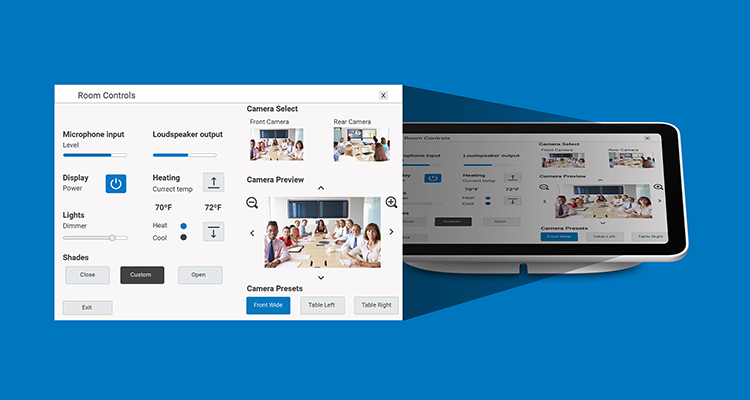What Keeps an AV Professional Awake at Night
 I still remember my first concerns about user engagement with the technology we provide. It was over a decade ago; we were fitting out four conference rooms per floor over about a dozen floors. Video teleconferencing in two, local presentation in the other. Pack up, head for the elevator, repeat. It was one of my first commercial jobs and an eye-opener.
I still remember my first concerns about user engagement with the technology we provide. It was over a decade ago; we were fitting out four conference rooms per floor over about a dozen floors. Video teleconferencing in two, local presentation in the other. Pack up, head for the elevator, repeat. It was one of my first commercial jobs and an eye-opener.
What concerned me? I had cause to wander back through a completed space to verify punchlist items. The rooms were in use and what I saw haunted me. In each presentation room, a paper easel stood with a set of markers. In all of the spaces – including those with integrated video teleconferencing – a speakerphone sat atop the conference table. It made me step back and wonder what we were doing. Why spend tens of thousands of dollars on integrated microphones, loudspeakers and audio processing only to have actual users engage with low-tech and low-cost solutions such as speakerphones or whiteboards?
It was a real question and one that lead me to my thought processes today: The first questions aren’t about resolution and screen size and videoconferencing. The first questions need to be about workflow and culture. We need to make the most common and most frequent actions as easy to accomplish as possible and as seamless. That – much more than technology – is the heart of what AV design is.
It’s pervasive. Until recently, adoption of technology by regular users has been a major challenge in the industry. Today the challenge has finally shifted. Smartphones have not only brought video chat to all of us, they’ve brought icon-based touchscreen interfaces to everyone’s pocket. Now the Crestron or AMX or Extron touch panel is no longer a scary mystery – it’s familiar. I’ve heard more than one user refer to the “iPad” on a conference table while pointing at the Crestron touch panel. All that said, it STILL isn’t as familiar a tool for making a phone call as the humble and traditional conference phone.
Enter last year’s biggest product – the Crestron Mercury. And with it a whole new set of challenges.
I sometimes think of the Mercury as an “if you can’t beat them, join them” product. After all these years, we still can’t break users of the habit of using that speakerphone in the middle of the table. In 2017, the team at Crestron finally hit on the obvious solution – we’ll give them a speakerphone, complete with the added functionality that the commercial AV industry is known for. Not only that, but it will serve as a gateway to the Crestron ecosystem, with the kind of remote monitoring and control features which are very attractive to IT support teams and completely invisible to users. It’s easy to adopt, easy to use and a big moment of change for the industry.
Why is this a scary moment for us? Because with devices like the Mercury, we can deliver at least a tolerable experience in small meeting spaces without the technical wizardry at which so many of us have become adept. To integrate a traditional video teleconference space, one would need to install and configure a codec appliance, install microphones, write a configuration file for a DSP and create a control system program to link everything together. To install a Huddle space with a Mercury? You need ten minutes with the web interface and not much else. We finally have systems which will be easily, widely, universally adopted — which will be the first choice on entering a space and which people feel they can use intuitively. And you barely need our specialized skillset to make them work.
That’s what should keep us up at night – that now the more mainstream video collaboration becomes, the easier it is to create. We now see an ecosystem with all-in-one solutions like the Microsoft SurfaceHub or Cisco Sparkboard. Simple soft-codec interfaces like the Mercury or Phoenix Condor.
What does this mean for us going forward?
It means that the days are numbered for those of us with nothing more to offer than technical wizardry, no matter how adept we are at it. Technical wizardry is becoming both easier and less relevant.
It also means that a bright future remains for those of us who can focus on building relationships, on serving as partners in providing collaboration as a service and creating long-term roadmaps. It’s what we’ve always done at our best and what needs to be our focus.
What keeps us up at night is the question of whether or not we as an industry can make that change or if we’ll cling to shrinking margins on increasingly commodified hardware.





